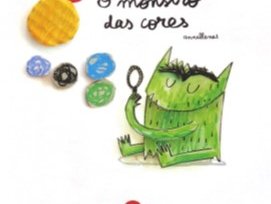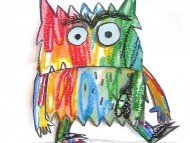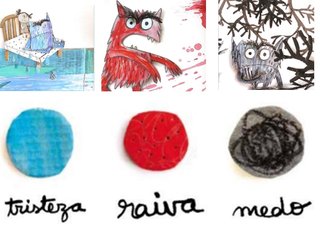Children's books enable an approach to emotions, which are evident in the text and mainly in the illustrations, through the facial and body expressions of the characters, the colours used that allow us to perceive the environment in which the action takes place and all the emotions mirrored in it.
Through contact with the characters, the child will understand the emotions experienced in the narrative by the protagonists, be able to identify with the emotional states of the characters and even be moved. The child will learn to express what it feels, to name its emotions with the help of an adult and also to regulate these emotions according to the contexts in which it is involved.
It is important to emphasise the role of the educator as a mediator in the process of emotional education through children's books. In this process, the expressivity and emotion that the educator puts into the reading of the children's book will enable greater involvement of the children in the reading and imaginary world, allowing them to be involved in the story and to understand more effectively what it intends to transmit.
Children's Literature favours a gradual regulation of emotions in such a way that the child becomes progressively more socioemotionally capable, becoming more self-aware and more oriented towards the development of a harmonious relationship with others, this being a fertile path in the building up of personal and interpersonal identity, critical thinking and full citizenship.
Children's early contact with emotions is fundamental for the child's global development, since the greater their emotional development, the greater their capacity to face life's adversities. Children's Literature is therefore an important pedagogical resource to help children manage their emotions - their own and those of others.
For example, reading and exploring the children's book “O Monstro das Cores” (The Monster of Colours), by Annallenas, enables the development of the child's emotional intelligence which, in turn, will contribute positively to the process of self-acceptance and in healthy psycho-evolutive development. The Monster of Colours is a monster who one day woke up weird, confused, disturbed... He didn't really know what he felt, all his emotions were mixed up and the monster couldn't express himself. In this way he felt the need to learn to put together all his emotions and interpret everything they made him feel, only in this way would he be able to express himself and share his feelings. By finding, identifying and differencing emotions through the book The Monster of Colours, namely through their self-identification with the character in the book, children will become able to discover themselves, to create their own happiness so that they become self-aware adults with the sensory ability to face life's challenges.
Hence, by using a children's book as a pedagogical tool, namely The Monster of Colours, the educator will be favouring the integration in the child's psychological development, the knowledge and acceptance of emotions, providing them with essential tools, through the identifying projection with the character and the situations experienced by him/her, to identify, distinguish, feel, express and self-regulate their own emotions, bringing them closer to the other in a more effective and healthy way.
A child who can identify, distinguish and manage their emotions well, developing empathic relationships with others, not only develops natural citizenship and social coexistence skills but is undoubtedly a happier and more balanced child, able to understand the consequences of his/her actions on him/herself and on others.
References:
Mendes, T. (2020). Literatura, Infância e Emoções: Representações das Emoções nos livros para crianças. In J. Sousa,
M. J. Santos, & M. S. P. Lopes (Eds.), Emoções, Artes e Intervenção (pp. 38-51). Escola Superior de Educação e
Ciências Sociais - Politécnico de Leiria.
https://www.ipleiria.pt/esecs/wp-content/uploads/sites/15/2021/01/E.book_emocoes_artes_inter_AF.pdf


